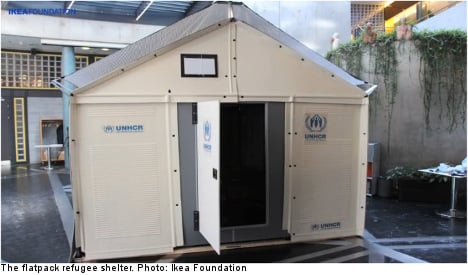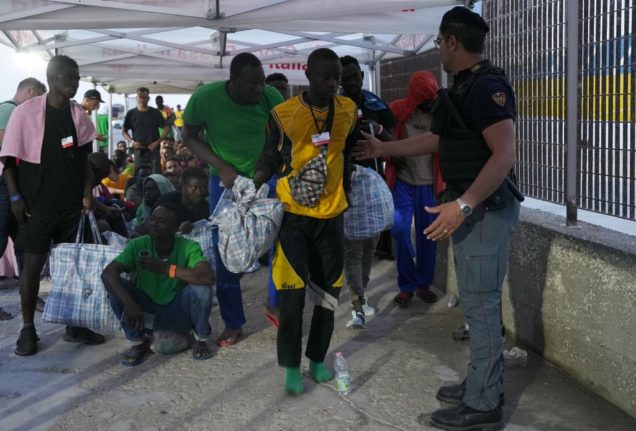The project, set to be trialled in July for a six-month run, began three years ago in an attempt to improve living conditions for people in refugee camps.
The Ikea Foundation joined forces with the United Nations High Commission for Refugees (UNHCR) to make it possible, with the team deploying flatpack style shelters to areas in desperate need of temporary housing, with the aim of replacing the commonly used white canvas tent.
With 28 of the units already shipped out to Ethiopia, The Local chatted to Refugee Housing Unit designer Johan Karlsson to find out more.
The Local: How did the project come about?
Johan Karlsson: We started as a small design team working on industrial design and product development. The opportunity arose to work with the Ikea Foundation so we decided we should look into the issue [of improving refugee housing] together with the UN and their knowledge of the field. The Ikea Foundation provided funding and put muscle behind the project.
We developed a series of prototypes. There have been a lot of trials along the way so now we have something to take to the field.
RELATED STORY: Refugee homes as ‘easy as an Ikea bookshelf’
TL: When designing the housing units, what were your main considerations?
JK: Our design scope was very simple: to create a housing solution that provides significantly better comfort and safety at a lower cost than the current tents. Many of the tents used in refugee camps have a life span of approximately six months before the impact of sun, rain and wind means they need to be replaced.
Long-term refugee situations mean that, on average, refugees stay in camps for twelve years. This made us realize that pushing down upfront costs was not as effective as providing a more durable solution, which is a small package and lightweight enough to be distributed and assembled in remote locations without trucks or machinery.
TL: What are the main features of the design?
JK: We would say it is the safety and comfort that you can expect of a house. The Referee Housing Unit (RHU) is built in coherence with European building standards and designed to withstand tough climatic conditions.
Furthermore, it is modular, meaning that you can extend the house for big families, and also, in event of failure, repair or replace broken elements, either with new elements or local materials. This can’t be done with a tent.
TL: After the tests are finished, what then?
JK: I’d hope to be scaling the project up within a year if there are no big surprises along the way. It’s easier to predict problems with the construction than what people think.
We’re awaiting confirmation with the government in Lebanon to test a further twelve units in Lebanon and then in Iraq in August. And we’ll be working closely with the [people living in the units] to gain feedback to help improve the units further.
TL: How much do the units cost?
JK: We would be working on an industrial scale, so $1,000 per unit but long-term we would expect the units to cost around $500 each.
Also, we will be outsourcing the construction of the units to lower the costs. Ikea is the main source of funding, in fact around 95 perfect of funding comes from them.
TL: How many people do you hope to be able to help with this project?
JK: A definite number would be hard to say but the number of units would be on an industrial scale, between 10,000 and 20,000 units so that’s 100,000 and 150,000 people.
But the need is much greater.
Victoria Hussey
Victoria on Twitter here



 Please whitelist us to continue reading.
Please whitelist us to continue reading.
Member comments